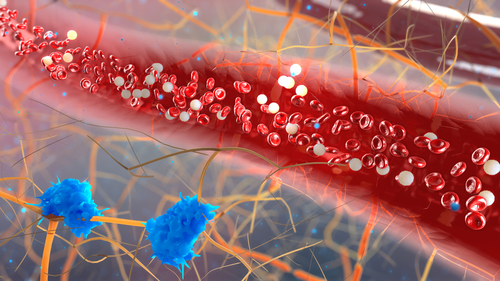Case Report Describes Patient with Muscle Condition Who Developed Acute Kidney Disease Due to Overlapping Vasculitis

Patients with dermatomyositis — a condition marked by muscle weakness and a distinctive skin rash — can develop acute kidney disease due to overlapping autoimmune diseases affecting the small vessels, a case report shows for the first time.
The patient described in the report developed both anti-glomerular basement membrane (GBM) disease and ANCA-associated vasculitis.
The study, “Double-positive with positive anti-glomerular basement membrane antibody and ANCA-positive disease in a patient with dermatomyositis,” was published in the journal BMJ Case reports.
Approximately 25% of patients with inflammatory myositis — inflammation of the muscles used for movement — including dermatomyositis, develop acute kidney injury, which is a sudden episode of kidney failure or damage.
While most cases of kidney injury are caused by medications or myoglobinuria (the presence of myoglobin, a protein in the heart and skeletal muscles, in the urine), physicians should be aware that a wide range of issues can cause this condition.
In this report, physicians present the case of a 44-year-old woman with dermatomyositis who was diagnosed with acute kidney injury due to double-positive vasculitis.
The patient, who had a history of dermatomyositis, was admitted to the hospital with acute kidney failure. She was previously treated with methotrexate (a type of chemotherapy used to treat myositis), but had been doing well off the treatment for six years.
She was healthy until two weeks prior to her admission, at which point she developed symptoms of nausea, vomiting, and lightheadedness.
Researchers evaluated a number of parameters including a blood urea nitrogen test and creatinine test — two measures of kidney function. Results from both tests came back abnormal.
Laboratory results indicated that the patient was positive for ANCA and GBM antibodies, which suggested that the renal failure was due to both anti-GBM antibody disease and ANCA-associated vasculitis (AAV).
Anti-GBM antibody disease, also known as Goodpasture’s disease, is a small vessel vasculitis (inflammation of blood vessels) caused by autoantibodies against a protein called alpha-3 chain of type IV collagen. AAV is also a small vessel vasculitis. Both disorders are known to cause kidney disease.
As expected, measures of inflammation, such as erythrocyte sedimentation rate and C-reactive protein levels, were also elevated.
The patient then underwent a renal biopsy, which showed necrotizing glomerulonephritis (inflammation of the kidney) — consistent with the diagnosis of anti-GBM glomerulonephritis.
For treatment, the patient received daily plasmapheresis — a process that filters the blood and removes harmful antibodies — until anti-GBM antibodies were undetectable. Unfortunately, the patient did not regain kidney function and received outpatient dialysis.
“We report the first case of a patient with dermatomyositis presenting with double-positive disease characterised by presence of anti-glomerular basement membrane (GBM) antibody and myeloperoxidase antineutrophil cytoplasmic antibody (ANCA),” the researchers wrote.
Fortunately, double-positive disease for anti-GBM and ANCA does not have significantly different renal outcomes than anti-GBM disease alone.
However, the investigators add that patients may develop “extrarenal manifestations and a relapsing disease course traditionally seen in ANCA-associated vasculitis.”
Researchers recommend plasmapheresis in combination with glucocorticoids (anti-inflammatory therapies) and cyclophosphamide (a chemotherapy) as the first-line treatment for anti-GBM antibody or double-positive disease. This treatment method should be continued until anti-GBM antibodies are undetectable in serum.






